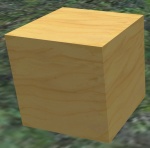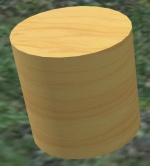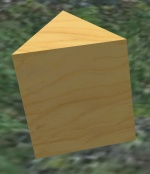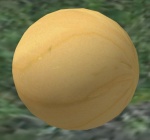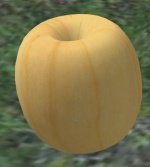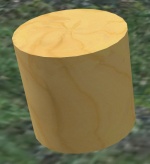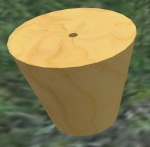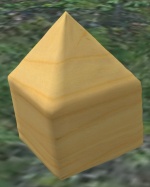Prim
De DigiWiki.
A primitive, or prim, is a single-part object. Multi-part objects will have multiple parts ("prims").
In Second Life, virtual physical objects such as cars, houses, jewelry, and even less obvious things like hair and clothing are made out of one or more prims. Objects made from prims are usually created in-world using the built-in object editing tool. This tool is used for all sorts of 3D modeling in Second Life, playing the same role as 3D Max, Maya, or Blender, but customized for the Second Life way of doing things.
Each prim is represented by a set of parameters, including shape/type, position, scale/size, rotation, cut, hollow, twist, shear, etc. These parameters are sent from a server to the viewer running on the resident's desktop, where the local video card is used to render the visual appearance of everything. (Rendering on the server would probably create a much higher amount of network traffic.)
The color, texture, bumpiness, shininess, and transparency of prims can also be adjusted, and images (textures) can be applied to each surface (face/side) of a prim to change its appearance. Box, cylinder, and prism prim shape types can also be made flexible.
Prims can be linked together into link sets. They can also be attached to avatars, but this process is separate from (thought similar to) linking.
In the Viewer source code, primitives are implemented in LLPrimitive, with vertex generation performed in LLVolume and rendering in LLVOVolume.
Box
all kinds of rectangular shapes
Cylinder
round tables, floors, long pipes
Prism
a box with one very small face
Sphere
can be used for ellipsoids of all shapes
Torus
most complex among normal prims, can be modified in many exotic ways
Tube
another form of hollow cylinder
Ring
another variant of torus
Sculpted
sculpted: new as of 2007, used for highly variable organic shapes
Properties
Mass
The mass of a prim is a function of it's volume, different prim shapes have different volumes thus different masses.
- Mass Lab demonstrates how different shapes have different masses.
Survival
The survival of properties depends upon the type of the property and what happens to the object.
| Property | Script Set Not Running | Script Removal | Take unscripted and re-rez | Shift-drag-copy |
|---|---|---|---|---|
| Sit Target | Yes | Yes | Yes | ? |
| Particles | Yes | Yes | Yes | ? |
| Floating Text | Yes | Yes | Yes | No |
| Spin | Yes | No | ? | ? |
| Collision Sound | Yes | Yes | ? | ? |
| Looped Sound | Yes | Yes | Yes | No |
| Remote Script Access Pin | Yes | Yes | ? | ? |
| Light | Yes | Yes | Yes | Yes |
| Status | Yes | Yes | Yes | Yes |
| Buoyancy | ? | No | No | ? |
| Texture Animation | Yes | Yes | Yes | No |
It should be noted that when a script (in an object) moves from one simulator into another while being set as "Not Running" (either by llSetScriptState or via the checkbox in the script editor) the script's state will be lost.
